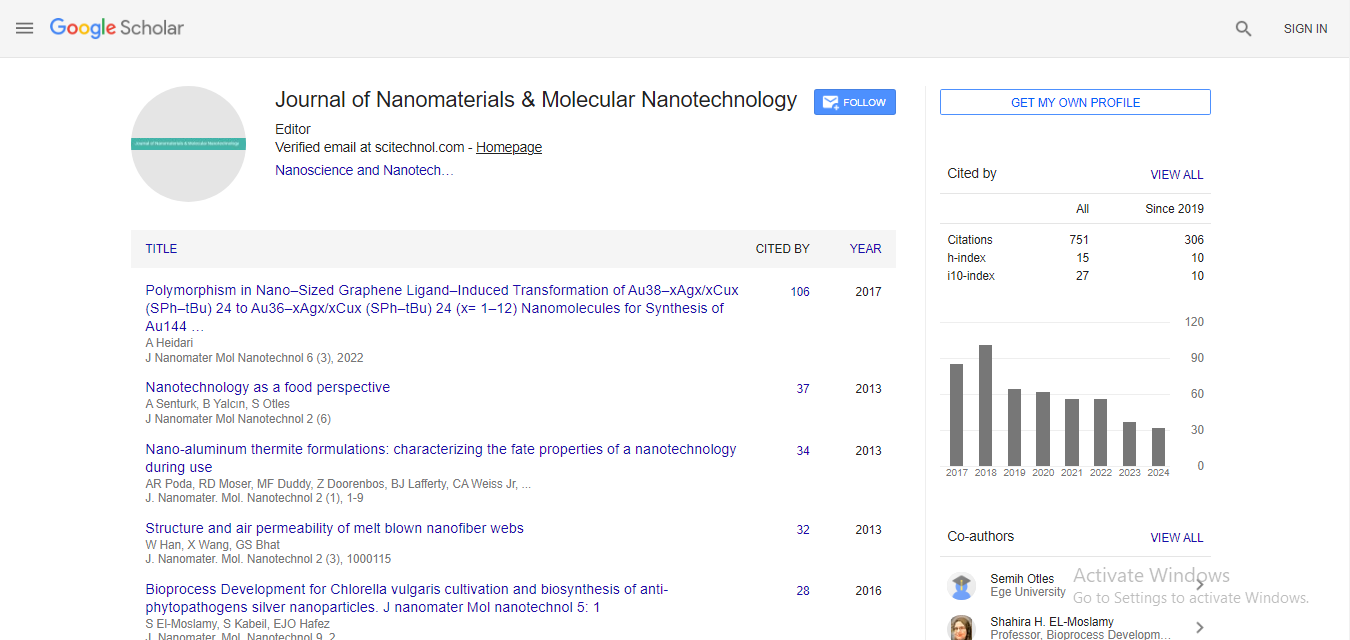In vitro evaluation of biocompatibility of spherical-shaped calcined hydroxyapatite nanoparticles synthesized via calcium sucrets method
M G G S N Thilakarathna, W P S L Wijesinghe, H M T U Herath, R P V J Rajapakse and R M G Rajapakse
University of Peradeniya, Sri Lanka
Nanotechnology and Science Park, Sri Lanka
University of Peradeniya, Sri Lanka
University of Peradeniya, Sri Lanka
University of Peradeniya, Sri Lanka
: J Nanomater Mol Nanotechnol
Abstract
There are numerous bio-materials, such as metals, metal alloys, carbon-based materials, polymers, ceramics, and composites of the above materials used in biomedical applications as bone cements, bone fillers and implants, though all of them have advantages and drawbacks. These materials that are used to fill and reconstruct bone defects have many limitations, due to unfavorable corrosion properties, improper stress distribution and adverse tissue reactions. Recently, throughout the world, biocompatible hydroxyapatite (HA) nanomaterials have been widely used in a broad range of biomedical applications. However, current synthesis techniques of biocompatible HA nanomaterials are very expensive. Therefore, we have developed a simple and cost-effective method to synthesize HA having spherical porous structures with chemical compositions closely related to the mineral phase of the human bone so as to impart osteo-conductive properties. These products may be used in biomedical applications at low-cost. These nanoparticles were prepared by precipitating from a precursor solution containing calcium sucrate and ammonium dihydrogen orthophosphate, at a Ca:P mole ratio of 1.67:1, at room temperature. The obtained product was analyzed for it’s crystallinity, crystallite size, morphology, and composition, by X-ray diffraction (XRD), Scanning Electron Microscopy (SEM) and Fourier Transform Infrared (FT-IR) spectroscopic techniques. Analyses were also done after calcining the respective products, soon after their synthesis, for 3 h, at 700 °C. The calcined samples always produced spherical nanoparticles of essentially the same diameter, between 90 nm and 100 nm, which does not change due to aging or by changing preparativetemperature in the range from 20-90 °C. Biocompatibility, cytotoxicity and bio-functionality of these materials are currently being under investigation to make sure their suitability for biomedical application. HA nanoparticles are nontoxic according to the cytotoxicity results which confirm their potential usage in biomedical applications. MTT (3-(4,5-dimethyl thiazol-2-yl)-2,5- diphenyl tetrazolium bromide) assay, Alamarblue assay for cell proliferation, Alkaline phosphatase (ALP) activity assay for cell differentiation and SEM analysis for the cell morphology studies confirmed that the synthesized HA nanoparticles are nontoxic.
Biography
E-mail: gayansnthilakarathna@gmail.com
 Spanish
Spanish  Chinese
Chinese  Russian
Russian  German
German  French
French  Japanese
Japanese  Portuguese
Portuguese  Hindi
Hindi 



